Introduction:
(Before we start, you can find my Black Friday deals post here, expect a massive update of products on sale on Thursday morning when many deals kick off. This guide attempts to as best as possible take into account those price changes, while also providing guidance beyond this weekend.)
It’s once again that time of year for my recommendations guide. I tend to time this to be just ahead of the holiday buying season, but more importantly to take into account what is usually a glut of new devices that have arrived over the past 45-60 days. I’ve been holding off just a few weeks longer than I’d normally want to, simply to ensure adequate time with all of these devices before making recommendations. That said, there are a couple of ‘provisional recommendations’ based on devices that have just arrived in the last few days or weeks where I don’t feel like I quite have the time I want to make a solid recommendation. Yet, ignoring them would be equally wonky.
My goal here being to give my specific recommendations – exactly the same recommendations I’d give to my own friends and family. This post isn’t here to list every option on the market in an effort to make every manufacturer happy. Nope, it’s a clear cut ‘what I’d buy’ for certain use cases. Of course as more and more companies get into the market, there ends up being more and more possible scenarios as the products expand in functionality.
If you’re looking for a listing of what I use day to day, check out my ‘Gear I Use’ list, as well as The Girl’s list too (about the only thing that might change on my list is using the FR235 instead of the FR620 for running, we’ll see…).
Finally, if you use either the Amazon or Clever Training links, you help support the site. I’ve partnered with Clever Training to offer all DC Rainmaker readers exclusive benefits on all products purchased. You can read more about the benefits of this partnership here. You can pickup most devices below through Clever Training using the links in the tables. By doing so, you not only support the site (and all the work I do here) – but you also get to enjoy the significant partnership benefits that are just for DC Rainmaker readers (like saving 10% on non-clearance/deep-sale items). And, if you are picking up items that are more than $75, you can get free US shipping as well.
With that, let’s dive into it!
Running GPS Watches:
Note that I’ve re-split up these recommendations this year a bit. Also note that in this case I’m specifically referring to running watches, not multisport watches, they have their own category. For this category I assume that you’re going to spend 80%+ of your time running.
Do keep in mind that this category is semi-heavy Garmin, because quite frankly – neither Polar or Suunto have released new running-specific watches this year (just variants of existing products). Or even last year either in the case of Polar. The only other mainstream entrant that deserved to be here was TomTom, which you’ll find below.
Road Running – Best All Arounder: Garmin FR230/235
I think Garmin really nailed it with the FR230/235 series. The singular difference between these watches is the optical sensor in the FR235, which the FR230 lacks. This unit replaces the FR220/225 products of the past, which I felt were overpriced in the mid-range arena compared to Polar’s M400. But with the FR230, Garmin added in a slew of features once previously only seen on the $400 watches, now at $250.
The FR235 meanwhile has optical HR in it. In my testing it’s good. Not perfect yet, but generally very strong for running (less so cycling). I think the gaps that I have seen with it, they’ll be able to solve – such as more smoothing needed, as well as an already planned upcoming battery improvement fix. You’ll see my full in-depth review of it sometime late Wednesday (today).
I suspect that the FR235 will become my primary running watch. Whether or not I end up using the optical sensor on it 100% of the time might be up for debate still, but it checks all the boxes I care about in a running watch today.
Road Running – Geekful of data: Garmin FR630
This is a bit of a new category. Previously I’ve done it more by price breakouts, but I think that with the slight change in product lineups by comparing geeky data features it deserves its own category.
Right now, there’s no watch that gives as much geeky running data as the FR630. Sure, the Fenix3 and FR920XT are soon getting the Gen2 Running Dynamics, but the FR630 does contain things like the Lactate Threshold testing and music/playlist control from your phone. More than that though, it’s just a heck of a lot smaller.
To be clear, you can get about 95% of the stuff in the FR630 on a Fenix3/FR920XT, but it’s really the size as the reason people go smaller. Some won’t care about that – but for others that’s hugely important.
(Note: This recommendation is semi-provisional right now, since my in-depth review is still pending, likely publishing early next week. Right now things are mostly quite good, though there are a few hiccups on the touch screen I’m still working through.)
Running – With Music: TomTom Spark
Ok, at the expense of creating a category for the sake of creating a category – too many people asked about this in years past. So let’s keep this simple: If you want music with your running GPS watch, go out and get the TomTom Spark. You can get it with or without optical heart rate. You could also look at the Adidas Smart Run GPS, but I find that awkwardly big for most people, and it tends to be a bit pricier.
The TomTom Spark includes 3GB of music storage, and you can use any Bluetooth headphones to connect to it. Otherwise, it’s a pretty clean and straightforward mid-range GPS running watch.
Running – Best Sub-$200 Watch: TomTom Runner2 Variants
Now this one is tricky. Yes, there’s the Garmin FR25 that’s out there – and it’s a great little watch that has smart notifications. It sits in there around $169. But, at the same time, there’s the TomTom Runner & Spark/Runner2 units. The base TomTom Spark/Runner2 is at $149, which makes it far more functional than the FR25, minus the text notifications (but that’s coming soon anyway). It just has more features. Though the FR25 is smaller on the wrist. Of course, the Polar M400 is often in the same price range too – though it seems to have long term issues with the USB connector. Still, it’s a good running watch and thus something you can consider and compare features.
Yet it gets even messier. See, the original TomTom Runner also often goes on sale for sub-$99 (it’s currently $99), making it even better than the FR10/15 below. So you’ve gotta be a little bit aware of things there. If you see the original TomTom units sub-$100, go for them over the Garmin’s. Otherwise, for that $100-$199 range, hit up the TomTom Runner2/Spark.
Running – Best Sub-$100 Watch: FR10/15 on big sale, TomTom Runner otherwise
Finally, heed the advice in the previous paragraph first, and then assuming none of them are sub-$100, then dig around for the FR10/FR15 on sale. I’ve seen it for as low as $50, off and on lately on random sales. Otherwise, the TomTom Runner is $99 most of the time and a sweet deal.
Sure, there are other cheap watches in that ballpark (usually more $60-$80), but overwhelmingly the complaints I hear from folks is that the software on those platforms is flaky at best, and cumbersome at worst. In my occasional testing of units out there (I buy a lot of random stuff to try out), I find the user interfaces super-old school and support rough. It’s usually just worth an extra Starbucks Frappuccino or two to get a unit from Garmin or TomTom here.
Hiking/Trail/Ultra Running – Best in Class: Fenix3, or Ambit 3 on sale.
My advice here is nearly the same as last year – if you’re spending time out in the woods, get the Fenix3. It’s simply the best all around option for people spending time out in the trails. It has everything the FR920XT does, except more navigation related features. Oh, and it looks a heck of a lot more classy. So for some of you, you’ll get it just because it’s classy looking. Note that you can easily swap any of my recommendations above on running (or triathlon below) for the Fenix3 if you’d like. It’s simply that I believe the Fenix3 is overkill for most runners, albeit just as easy to use as the other watches.
However, you’ll note the Ambit3 is in there. Some believe the Ambit3 has better GPS accuracy in harder conditions than the Fenix3. I think that may be barely true, but only to a certain point. I did some hiking this summer and found that in the hardest of conditions, all three companies (Garmin/Polar/Suunto) can get into trouble just as much as each other. However, if you can find a good deal on the Ambit3, then it’s still a superb product. Just one that lacks all of the features of the Fenix3 lineup. Simply decide if you need those features.
The one caveat would be if you really really really want mapping, then Epix is honestly your only choice. It has all the features of the Fenix3, but also with visual maps you can load and buy. But in general it just doesn’t make my general recommendations guide. I think it’s usually a good device, but just not my cup of tea.
| Product | Amazon | |
|---|---|---|
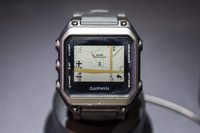 | Garmin Epix $549 | Amazon |
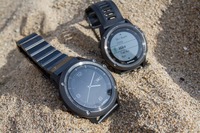 | Garmin Fenix3 $499 | Amazon |
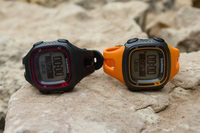 | Garmin Forerunner 10 $129 | Amazon |
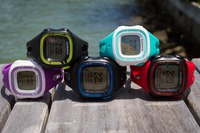 | Garmin Forerunner 15 $139 | Amazon |
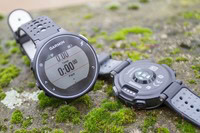 | Garmin Forerunner 230 $249 | Amazon |
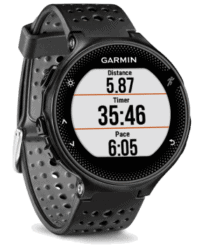 | Garmin Forerunner 235 $249 | Amazon |
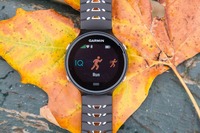 | Garmin Forerunner 630 $399 | Amazon |
 | Suunto Ambit3 Peak $499 | Amazon |
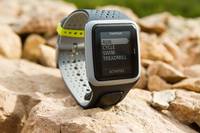 | TomTom Runner $99 | Amazon |
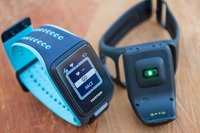 | TomTom Spark $149-$199 (Features Vary) | Amazon |
Triathlon GPS Watches:
This category is for what the industry calls ‘multisport’ watches, but that typically just translates to triathlon watches. They track your time/distance/etc… within the three sports – swim/bike/run. From a non-triathlon multisport aspect, these watches are often used by everyone from wind surfers to skaters, mostly because of their versatility and flexibility in configuration and display customization.
Overall Best in Class: Garmin FR920XT and Fenix3
I’m not really sure there’s any surprise here. Garmin dominates this category for good reason – it’s simply got the most features for the buck – and it’s got more flexibility than other watches. They’re the only units that offer a quick release for moving from swim to bike to run, as well as offering far superior power meter capabilities than either Suunto or Polar.
As for choosing between the two, it’s honestly mostly going to come down to style choice and display preferences. The Fenix3 is more fashionable in an office setting, whereas the FR920XT tends to be more sporty in a Newton shoes sense. The Fenix3 also offers more navigational features, in the event you’re doing hiking and the like.
Note that the Epix does actually have all the software features of the FR920XT & Fenix3 from a triathlon standpoint, and of course includes maps too, but it’s bigger and costs more. And for 99.99% of people out there, it’s probably unnecessary for triathlon.
Budget Options: Suunto Ambits on Sale
Now if you’re looking for a budget watch, the Suunto Ambit’s when on sale tend to be great alternatives. Both Peak and Sport models are strong contenders in triathlon realm, though they lack really strong power meter support – so if you have a power meter, you might want to look elsewhere. But if you’re getting into the sport, there can be some great deals here. Note that the Ambit3 Run does NOT include swimming or cycling sensor support – so you’ll want to avoid that. But the Ambit3 Peak and Sport both include it, and I often use the Ambit3 as a solid reference unit in openwater swim tests (I find it consistently tends to perform the best there out of all openwater swim units I use).
As for deciding between Peak and Sport, the key difference is the barometric altimeter. I find that Suunto has done a superb job with GPS based elevation, so I think the Peak is less valuable for triathletes (but more valuable if you’re out on a trail/hike).
Note: For triathlon I do NOT recommend the TomTom Cardio/Spark or Vivoactive:
I want to be really clear on this. The reason I don’t recommend these watches is twofold, but mainly centers on the fact that they don’t support a multisport mode. Yes, it supports running, and cycling, and indoor swimming. But you can’t tie all those together in a race or training. Further, it doesn’t support openwater swimming.
This is pretty similar for some of the other running watches like the Polar M400 or Garmin FR230/235/620/630. Yes, they all support running and cycling, but none support swimming metrics and none support multisport modes. If you cycle sparingly and don’t swim, then they’re all still viable options.
| Product | Amazon | |
|---|---|---|
 | Garmin Fenix3 $499 | Amazon |
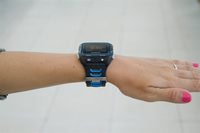 | Garmin Forerunner 920XT $249 | Amazon |
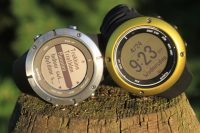 | Suunto Ambit2 $319 | Amazon |
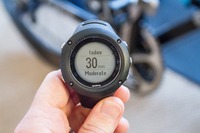 | Suunto Ambit2 R $250 | Amazon |
 | Suunto Ambit2 S $219 | Amazon |
 | Suunto Ambit3 Peak $499 | Amazon |
 | Suunto Ambit3 Sport $399 | Amazon |
Cycling GPS Units:
This field has mostly seen competitors abandon it. No, really, they have. Sure PowerTap has released a slightly updated version of the Joule GPS+ with Bluetooth capabilities, and Mio has pretty much stopped updating their cycling series with anything meaningful. Cateye has made some inroads in the lower-end market, but that’s it.
Really the only one who’s given it a go is Polar, for which they submitted a rock star entry this past summer in the M450. We of course also have Wahoo with their pending ELEMNT, which looks like it could be a very solid first go at the GPS bike computers, however, it just got delayed till January – so it can’t make the cut for now, but is certainly something to keep tabs on.
Best All Around Cycling GPS: Garmin Edge 520:
Over the last few months, I’ve totally transitioned my bike computers to being a fleet of Edge 520’s. Of course, I use multiple head units for recording data, and these days I’ve literally got four of them up on my handlebars for day to day rides recording power meter data.
For everyone else though – it’s my best overall recommendation on a bike computer. It’s got built-in Strava segment support, while also having the ability to add maps to it for basic navigation/awareness. Plus upcoming Connect IQ support for 3rd party apps. And, it’s just about the right size and really nails the experience. This hands-down wins this category.
Best Budget GPS Unit: Polar M450
Now, at half the price of the Edge 520 is the Polar M450. It was announced about two weeks prior to the Edge 520, and is a sweet little unit for $169. It’s essentially the core features you want on a GPS bike computer, in a rather nice little size. It can sync your rides afterwards via Bluetooth Smart, and soon also send those completed rides to Strava wirelessly (a major step forward for Polar). Basically, if you don’t have a power meter, don’t care about on-unit mapping, and don’t care about Strava Segment integration, then I’d definitely consider this unit – especially if you have Bluetooth Smart sensors.
Best Commuter Options: Wahoo RFLKT
Now this is a super-interesting option right now, in light of Wahoo’s Black Friday sale that will put the base RFLKT at $49. Even more so since last week they announced smartphone notifications will now appear on the RFLKT, plus a bunch of other backend changes they’ve made in recent firmware, based on Wahoo ELEMNT learning’s. For $49 you get something that you can easily pop on a commuter bike and ride with to record stats and quickly upload them to various sites. Plus, you can connect to Bluetooth Smart sensors too (if you get the RFLKT+ version, you can also connect to ANT+ sensors).
I think if post-Black Friday they keep the price in the $69-$79 range, sorta like the Bontrager Node units used to be, it’d be a fascinatingly compelling price point/product.
| Product | Amazon | |
|---|---|---|
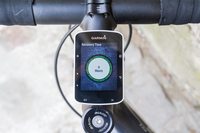 | Garmin Edge 520 $229 | Amazon |
 | Polar M450 $169 | Amazon |
| Wahoo Fitness RFLKT+ $130 | Amazon |
Swimming:
Swimming devices continue to be a funny realm that mostly gets ignored by companies, since many competitive swimmers don’t like to wear tech (or even a basic watch). So it’s hard to make inroads into the category with such a small market. Still, here’s some thoughts.
MP3 Players: FINIS Neptune*
This has been my mainstay recommendation for a swimming MP3 player for about two years now, mostly because I like the display aspect, since it makes it easy to get things queued up, while the sound quality is also just fine for a pool. And then finally, the buttons also makes it easy. If I look at reader feedback, most are quite happy as well there – with the only complaints coming from folks that require swappage of the device after significant use (which FINIS covers).
*You’ll notice an asterisk, that’s because FINIS just last week started shipping their new Duo (pictured above). This sorta combines the Neptune functionality with that of the original SwiMP3, it also fixes much of the charging issues with the SwiMP3. I just haven’t had time to really dig into it yet, but it’s something to keep an eye on.
Indoor Pool Watch: “It’s Complicated”…with a side of Vivoactive.
This one is also messy, because I’ve previously recommended (and loved) the Garmin Swim watch. It was roughly sub-$150, but also now like 3-4 years old and basically untouched. From a functionality standpoint it was great having a year-long battery life so it just hung out in your swim bag and sync’d when it was close to your computer. However, it lacked Bluetooth Smart for your phone to download that way, so it’s kinda lost favored nation status.
Instead, your next best bet is the Vivoactive, which is sub-$200 these days. It’s slimmer than the Garmin Swim was, and just as capable in the pool. Plus, it has running and cycling and activity tracking and all sorts of other jazz. Still, I wish there was a Garmin Swim2 with Bluetooth…and done.
Openwater Swim: No good answer
Quite frankly, nobody makes a good dedicated outdoor swim watch. Your best bet here is to either get one of the multisport/triathlon watches for openwater swim mode (on your wrist). Or, to otherwise just use any GPS you have and plop it in your swimcap using the swimcap method.
Sensors and mounts:
If you’re getting any of the units listed above, you may be in the market for accessories. Obviously, some bundles include accessories, while others do not. Here’s what I recommend based on having entire buckets worth of accessories to test with.
Before I get started, I’ll note that when possible I’d highly recommend folks buy dual ANT+ & Bluetooth Smart (BLE) sensors. These are available in almost all categories now. The reason for going dual is simple: It allows you the flexibility to choose whichever device you want and know it’ll work with it.
Heart Rate Sensor: Scosche Rhythm+ (Optical Sensor)
This is my primary and singular running/cycling/hiking/etc heart rate sensor (when not testing something else). I just love it. While I liked the Mio Link wrist straps, I’ve found the signal too weak in some cases and then also not quite as stable as the Scosche from a measurement standpoint. The Scosche is dual ANT+/Bluetooth Smart, so it can transmit to just about anything. I’ve used it now as my primary strap for almost two years. You’ll see it in almost all my tests these days.
Speed/Cadence: Wahoo BlueSCv2
Wahoo’s BlueSCv2 is what I use when I want a combo speed/cadence sensor, which includes both ANT+ & Bluetooth Smart (dual) Thus, two for the price of one. I love this model though because of the quick release bands making it easy to move between bikes if you need to. You’ll find this on all my bikes where I’m doing power meter testing, as I use the magnets as a ‘known good’ for validating cadence readings.
If however, you’re looking for a cheaper (ANT+ only) combo option, just simply pickup the Garmin GSC-10 – which usually hovers around $30-$35. I believe Bontrager also has a dual option out these days too, but I haven’t tried it yet.
Cadence-Only: Wahoo RPMv2
This one is another unit that you’ll find on many of my test bikes, mostly because of portability. I also take it with me travelling when I’m using a hotel spin bike. It’s a small pod that attaches to the side of your bike crank and it transmits on both ANT+ and Bluetooth Smart, so you can use it with your Garmin device or your smart phone.
Speed-Only: Garmin Speed-Only Sensor
Since Wahoo hasn’t yet come out with a dual ANT+/BLE speed sensor, it’s the Garmin one for the win. This little sensor is perfect if you only want speed. It requires no magnets and no zipties, and just simply clips on your back (or front) wheel. I wrote up a thing on it here previously.
Note: You can also try out the Velocomp dual ANT+/BLE sensors, which I’ve been using on and off – but I just haven’t tried the BLE portion out as much yet.
Running Footpods (ANT+): The Timex, Suunto, and Garmin mini-footpods (whatever is cheapest that day)
As long as you pickup any of those three above they all work the exact same way and all function with any ANT+ device. In other words, just pickup whatever is cheapest that day. Ensure that you aren’t picking up the giganto footpods of yesteryear.
If/when in doubt, check out my post on ‘All you ever wanted to know about the ANT+ footpod’.
Running Footpods (Bluetooth Smart) : Adidas miCoach Bluetooth Smart Footpod
For Bluetooth Smart footpod capable devices or apps, I’d go with the Adidas one. It’s the smallest BLE footpod on the market and works great with most devices.
Best ANT+ to BLE Bridging Solution: 4iiii Viiiiva
While this may seem an odd category, I keep getting requests for it – so I’m putting it here to assist folks in my recommendation. There is really only one other competitor in this space, which is the Mio Velo. However, I find that 4iiii has done a much better job with the overall ‘package’ on the Viiiiva, which just got a huge pile of cool updates even this week (years after release), including the ability to save data while away from the phone and the ability to work with ANT+ gym equipment (something Garmin watches used to do). Oh, and it’s still a dual ANT+/BLE HR strap.
Bike Computer Mounts (just computer): Barfly Mounts
I love my Barfly, specifically for triathlon, the TT/Aero Barfly. I reviewed it back here, but it just works perfectly. While K-Edge does make some great (and really darn sturdy) mounts for Garmin units, I simply don’t think your Garmin unit needs that much mount durability to justify the price. Note that I easily recommend the Barfly for just the bike computer, but if you plan on attaching an action camera to the same mount, read on…
Bike Computer/Action Cam Combo Mount: K-Edge Combo Mounts:
In the event you’re going to hang an action cam from your bike computer mount, that’s where I typically recommend you transition away from the Barfly mount and more to the K-Edge mount, due to the stability for cameras. Read more on that in my action-cam section though.
| Product | Amazon | Competitive Cyclist | |
|---|---|---|---|
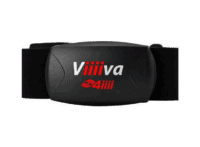 | 4iiii Viiiiva ANT+ to Bluetooth Smart HR Strap & Bridge $79.00 | Amazon | |
| Adidas Running Footpood (Bluetooth Smart) $79 | Amazon | ||
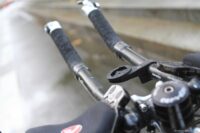 | Barfly Tate Labs Road Bike Handlebar Mount $25 | Amazon | |
 | Barfly Tate Labs Timetrial/Triathlon Bike Mount $37 | Amazon | |
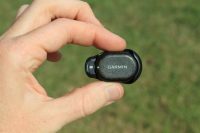 | Garmin ANT+ Running Footpod (Mini) $45 | Amazon | |
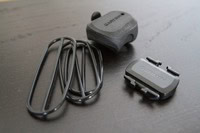 | Garmin Speed-Only ANT+ Sensor (magnet-less) $39 | Amazon | |
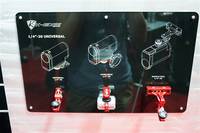 | K-Edge Action Cam Mounts Varies | Amazon | |
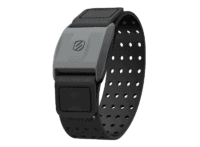 | Scosche RHYTHM+ $79 | Amazon | |
 | Suunto ANT/ANT+ Running Footpod (good for both ANT types) $70.00 | Amazon | |
 | Timex ANT+ Running Footpod (Mini) $51.00 | N/A | |
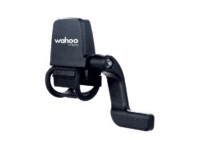 | Wahoo Blue SCv2 - Bluetooth Smart/ANT+ Speed/Cadence Sensor $59 | Amazon | |
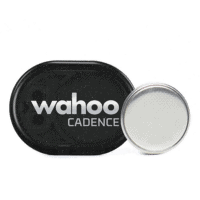 | Wahoo RPM (Bluetooth Smart/ANT+ Cadence Sensor) $34 | Amazon | Competitive Cyclist |
Weight Scales (Connected):
Best Options: Fitbit Aria or Withings WS-30/WS-50*
I’ve been including little snippets of these scales in my Fitbit Surge and Withings Activité reviews. Overall, either scale is a solid option and really just depends on if you’re aligned to either of those platforms already (Fitbit or Withings). If not, poke at the slight differences with 3rd party partners, and see if either of those partnerships matters. Failing that…flip a coin.
Seriously – they’re near identical scales (exempting the more advanced WS-50 with pulse and air monitoring, and body fat). Any other relevant differences are partnerships or platforms. And, again, they’re both great scales. I use them both, frankly just depending on which bathroom I’m in.
*The one exception here is the new Garmin Index scale, if you’re heavily aligned to Garmin. I have a fully separate post coming out on Thursday talking in detail about choosing a WiFi weight scale (yes, perfectly timed to your Thanksgiving self-stuffing). But basically, if you’re really into having all your Garmin data in one spot, then the Index makes a ton of sense (and thus far, it works pretty darn well for me). But if you’ve got data in other spots/partners – then it makes less sense to get the Index since they partner with only a single site: MyFitnessPal.
| Product | Amazon | |
|---|---|---|
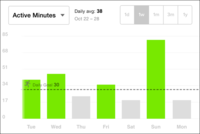 | FitBit Aria WiFi Weight Scale $129 | Amazon |
| Garmin Index Smart WiFi Scale $149 | Amazon | |
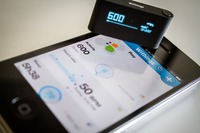 | Withings WS-30 WiFi Weight Scale $99 | Amazon |
 | Withings WS-50/Smart Body Analyzer WiFi Weight Scale $149 | Amazon |
Action Cameras:
Best All Around Action Cam: GoPro Hero4 Silver
I love my little Hero4 Silver. Seriously, you’re not taking it from me. It’s not just one thing that makes it awesome. It’s the quality of the lens/resolution I get on both photo and video, it’s the super-crisp touch screen on the back, it’s the fact that the app is super-mature and easy to use (and far faster than Garmin’s), plus the size makes it easy to use. I bring this everywhere; it’s always with me on every trip and the vast majority of runs and rides. Plus, when I want to shoot 2.7K, I can do that.
I have virtually no complaints about the camera, except I wish that it also did what Garmin’s VIRB XE does with dashboard metrics.
Best Cam for Sports Metrics: Garmin VIRB XE
So why the VIRB XE if I love the Hero4 Silver? Well, there are cases where I want to share videos with various dashboard metrics overlaid on it – like power, speed, pace, etc… For this, the Garmin VIRB XE rocks. They’ve taken all of the quirks of the original VIRB and really cleaned them up, and the desktop software is just super easy to use and produces really pretty videos. I do find the phone app often flaky and slow though.
So why not just use the GoPro combined with a Garmin wearable to record the data and mix after the fact? Well, it’s just one more thing to deal with. For me, I find the time savings worth it. So if I’m shooting something that I want to share that type of info (i.e. a ride or something else that would have data overlaid), I’m going to go for the VIRB XE. I do find that the photo performance in low-light far lags behind the Hero4 Silver, but in good sunny conditions it does quite well.
Best Safety Cam: Cycliq Fly6
Next we’ve got the Fly6. If you’re not familiar, this isn’t an action cam per se, but it’s the closest category I’ve got. It combines a rear light (which you’d want anyway) with a camera. Basically, this is a safety cam. And not in the sense that it’s going to save your ass, but rather, it’s like an insurance policy for later. I have it on my bikes while riding around the vast majority of the time and it’s just silly easy to use.
Now, this isn’t really a replacement for a GoPro or the like, it’s not got that level of quality. Rather – it’s just so in the event something bad happens to you – you can prove it wasn’t your fault, or even better – catch the person if they left you at the scene.
Action Cam Mounts: K-Edge Action Cam Mounts
Now, while I often use the Barfly for my Garmin Edge, I really prefer the K-Edge mounts for my action cams. I’ve come to love the sturdiness of the K-Edge mounts, especially the new combo mounts they’ve made (Garmin + GoPro). It’s hard to explain to someone how incredibly rock-solid these mounts are until you attach a camera to them and don’t even get a sliver of a millimeter of sway on them (unlike a stock mount). Incredible. I’ve bought front/back mounts for every bike I have, love them.
| Product | Amazon | |
|---|---|---|
| Cycliq Fly6 Bike Camera/Light $169 | Amazon | |
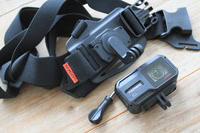 | Garmin VIRB XE $399 | Amazon |
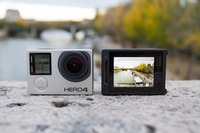 | GoPro Hero4 Silver $399 | Amazon |
 | K-Edge Action Cam Mounts Varies | Amazon |
Activity Trackers:
So…here’s the thing, in the past, I used to have a section here on activity trackers. But the market has simply gotten so big, and the features in general overlap each other on so many units. It’s nearly impossible to simply say “Go get a Fitbit” or “Go get a Polar Loop” or “Go Get a Jawbone”.
Instead, it’s really best to look at whatever activity trackers either:
A) Your friends are using
B) Your existing device is on
Seriously. If you’re motivated by competing with friends, then you want to be on the same platform as them. So if they’re all on Fitbit – go get a Fitbit. And same goes for Garmin or Withings, or anyone else.
Secondly, if you already have (for example) a Garmin device, heck, it’s likely it has an activity tracker in it. But say you want something else – in that case, get something on the same platform as that – so you can track everything in one place. It’d make no sense to have a Fitbit activity tracker and a Garmin GPS watch.
Next to last – the vast majority of activity trackers are roughly accurate. To that I meant that no activity tracker on the market is perfect. None. Instead, they are estimations – treat them as such. Each company tries to fine tune their algorithms for various use cases. Some might be better at guarding against false positives in the shower, but less so doing dishes. Others the inverse. What matters is that at the end of the day if you’re activity tracker said you only did 2,000 steps, and you’re goal was 10,000 steps – then you were…lazy. Meanwhile, if it says you did 9,782 steps and you think you really did 9,923 or 9,458 – just go walk around the block an extra time. It’s about tracking trends – not exacts.
Lastly, in general I prefer activity trackers that have a display on them. If I didn’t need a display, then most phones these days can track 99% of your awake time anyway. So for me, I want to be able to glance at my wrist and see how many steps I have and how far from a goal I am.
Cycling Power Meters:
Choosing a power meter is a tough decision matrix. Anyone who answers the question “Which power meter should I choose?” and instantly names a specific brand name/model upfront, is full of crap. The correct answer is “Tell me more about your usage plans?”
There are so many variables that go into that decision beyond just price. For example: How many bikes? What type of bike? What type of pedals? Do you want to move it around a lot? Race wheels or not? What do you want to measure? And on and on.
The good news is that I cover these in-depth in my Power Meter Buyer’s Guide from this fall. Nothing has changed there since then (neither in products nor in my opinions), and I don’t expect any shifts in the near future.
Cycling Trainers:
The best way to cover this section is to go read my complete 2015 cycling trainers guide, so again like power meters, I’d go over and check out that post for all my recommendations (a massive list on a slew of categories).
Obviously, given it’s now basically the trainer season, there’s no more trainers coming out till at the earliest mid-next year, with most announcements typically happening at Eurobike in August each year.
Don’t forget the Comparison Tool!
Ok, lots of recommendations. If there’s a category I’ve missed (entirely plausible) – just drop a note in the comments and I’ll try and come up with a recommendation and add it above.
More importantly though, you can mix and match just about everything I’ve talked about above, with in-depth comparison tables over at the product comparison calculator, which today supports: Action Cameras, Heart Rate Straps, Watches/Bike Computers, Power Meters, Activity Monitors, and Trainers.
Select product use/budget for a comparison from the drop down menus:
Note: While many running watches have a basic bike mode, only running units that are multi-sport focused are also included in the bike-only results (in addition to bike-specific units). Hiking units are those that include a Barometric Altimeter, Magnetic Compass and navigational functions.
Or select products for comparison by clicking the product boxes below:
As always, thanks for reading – and supporting the site!
| Product | Amazon | |
|---|---|---|
 | Garmin Fenix3 $499 | Amazon |

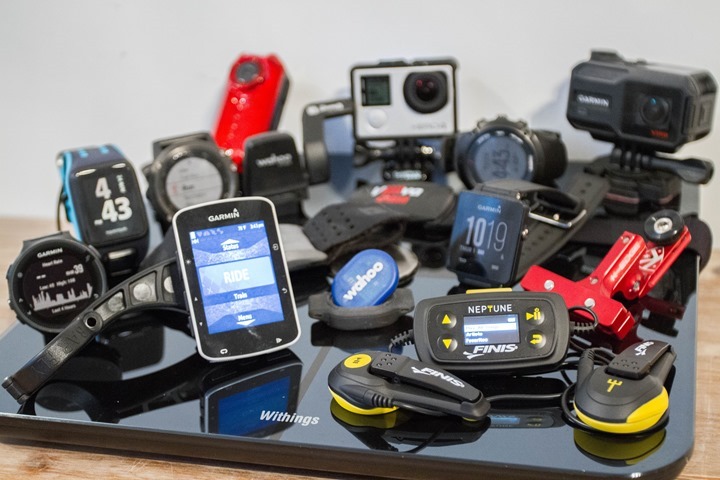
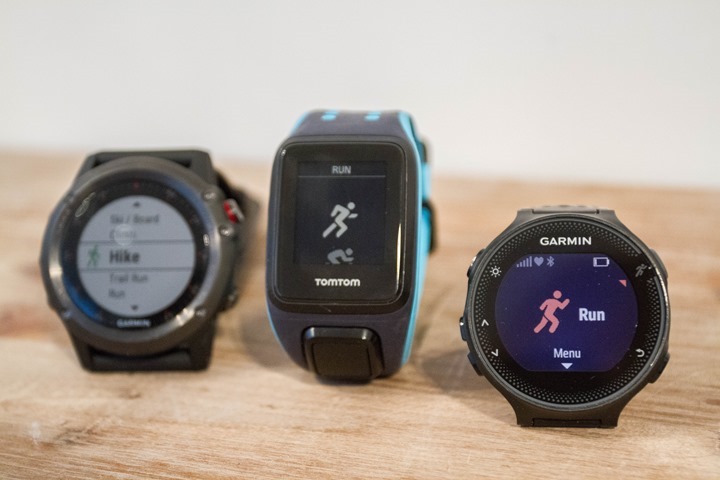
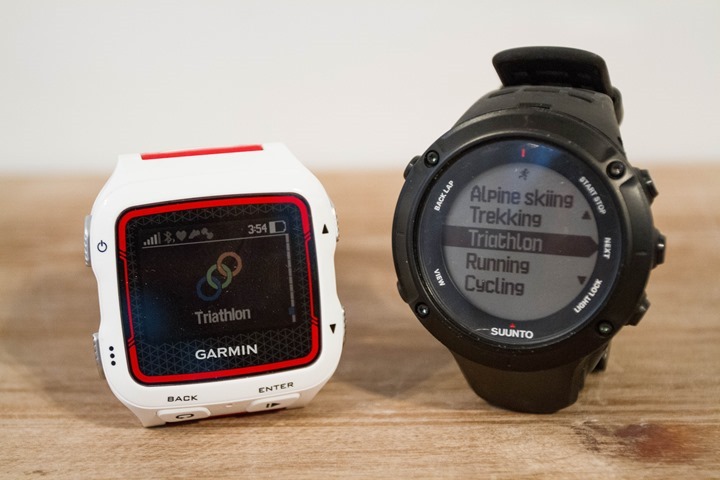
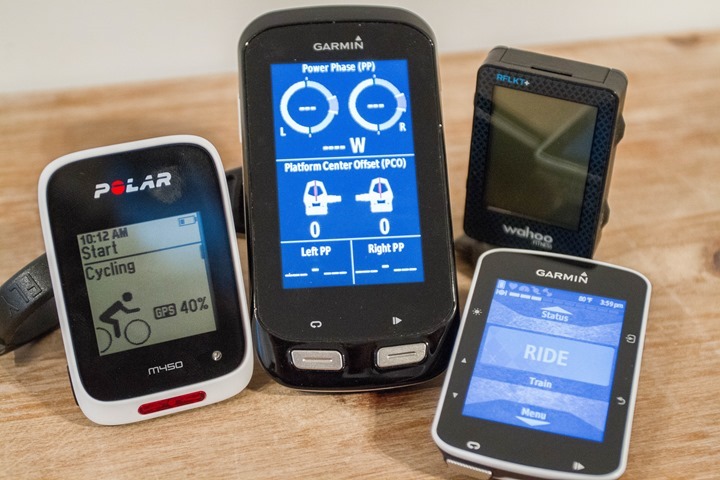
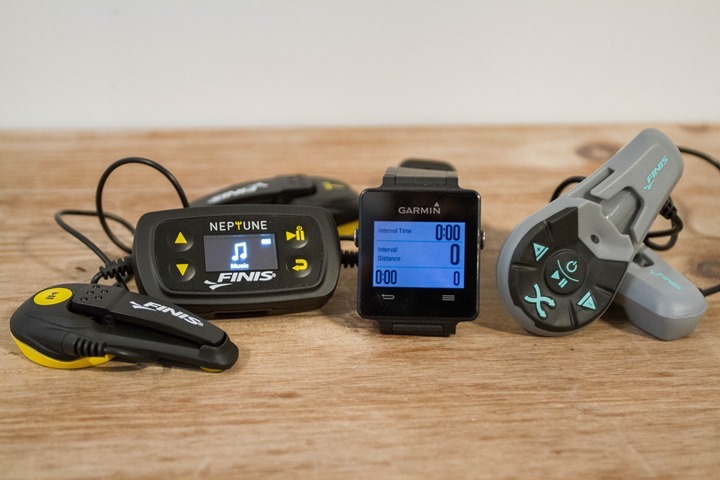
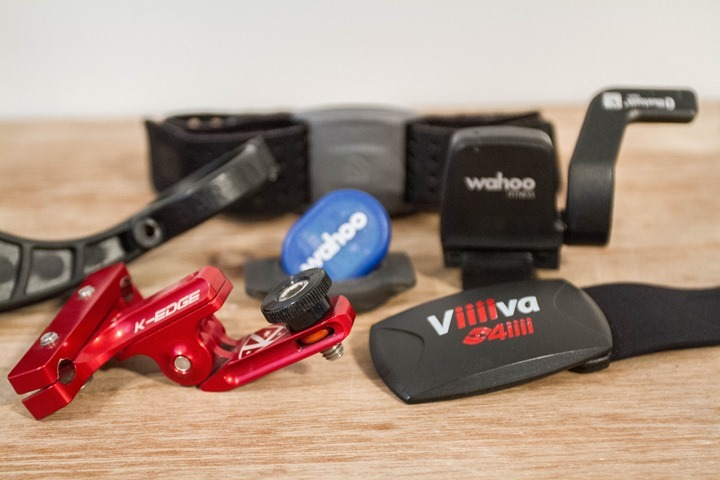
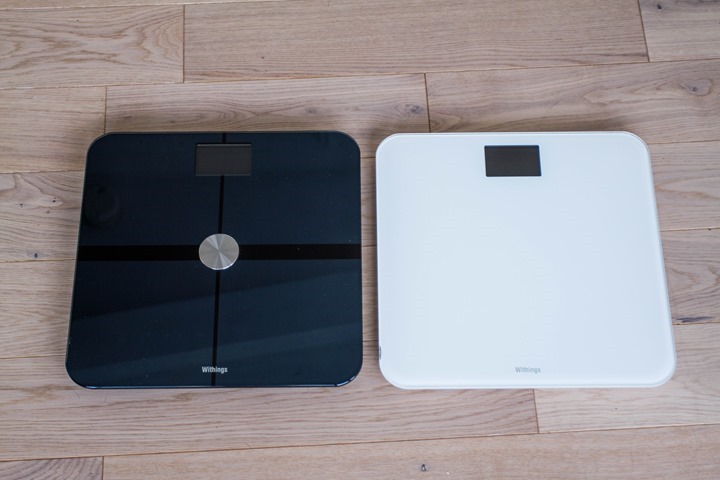
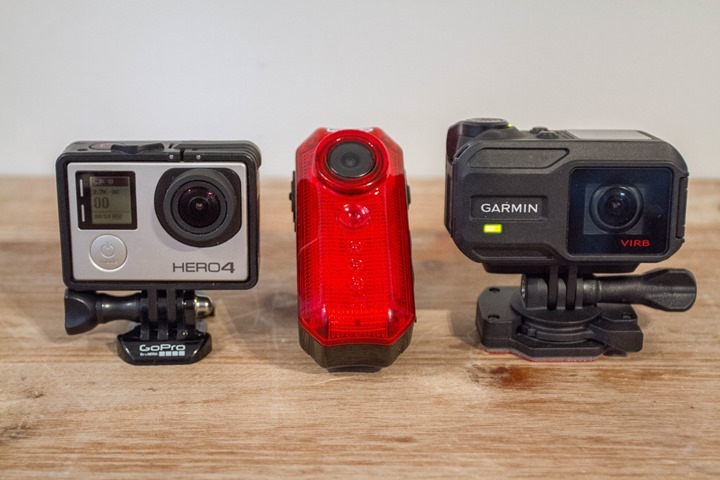
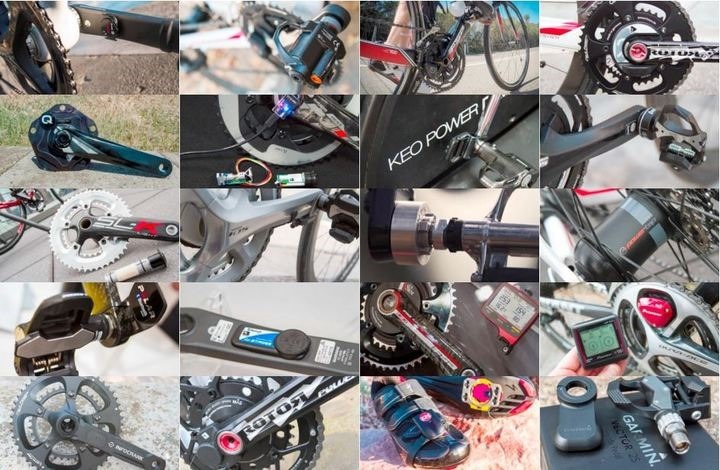
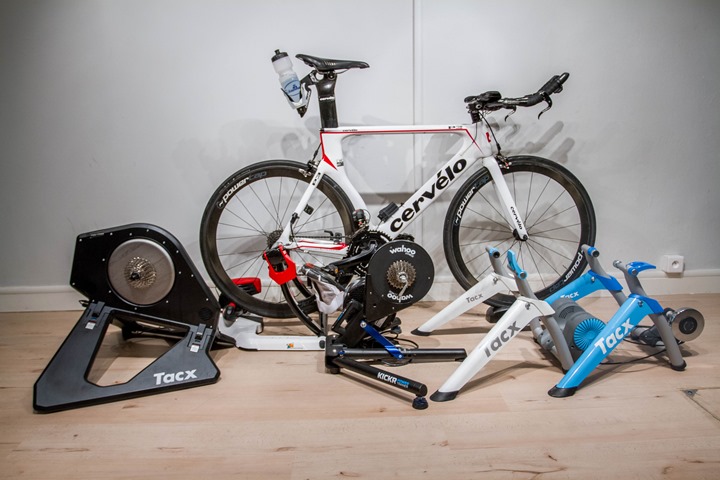
















I’ve been all over the map with gps watches and general fitness trackers the past few years –multiple jawbone Ups, garmin products, and most recently the discontinued 225). I like both activity tracking and –at a minimum — mostly correct pace/distance information for running, whether that be by gps or highly calibrated pedometer info.
Perhaps I am just hard wearables, but for pure trackers, nothing has lasted longer than 6 months, and my garmins have all given up the ghost as soon as the warranty has run. I don’t care if I get smart phone notifications on my device.
Does any one have any suggestions for a sturdy device that can be worn all day, every day and whose product life will justify the price?
Looking for a recommendation for a GPS/HR device for cross-country skiing (tried searching the site and scanning all the posts here and didn’t catch a specific recommendation). Would like a good sized display as poling arms move more than running arms… Would likely wear it over a jacket/top sleeve. Also wondering about an optical strap ala Scotche vs chest strap for cold-weather reliability…
I say garmin fenix series. They have a ski mode. Should get you to what you want to use it for. I have a fenix 2 and works great for skiing. (Selling if you want it)
I am trying to decide between a Suunto Ambit 3 HR and Garmin Fenix 3 HR which would be best for a mid 60’s male in order of the following disciplines he participates in ocean swimming, sea kayaking, pool swimming, skiing, sailing and also follow sleep patterns. Can anyone help which way is best to go pIus I am looking for a good gps / navigation system. I have read the reports and am quite overwhelmed and confused and many thanks
Thanks! I’ll take a look in more detail at the Fenix and let you know if I’m interested in yours.
Hi Ray,
Thanks for the awesome and very detailed reviews. Always a pleasure to read.
I know it must have been asked a million times by now, but just wondering what you would recommend between the M400, TomTom Runner and Ambit2?
Currently I can find all three for roughly the same price (R2000 – R2500 South African) and the Ambit and Polar both come bundled with HRM.
Main use would be indoor training, some hiking and here and there some rock climbing. I don’t swim all that often and don’t really need hugely technical GPS info. Just some simple GPS functionality, preferably step tracking and accurate HRM would be great. I’d most likely wear it day to day as well, but I don’t mind chunky watches.
I know most of the considerations between these three are based mainly on price, so if all three are roughly the same price, where would you recommend I hang my hat?
Thanks!
Sorry, when I say “runner”, you can also interchange that with the latest Spark. Also at roughly the same price.
What is the difference between the Wahoo RPM and Blue SC v2?
Which is the newer model?
I’m in the market for a new GPS running watch since my Forerunner 210 died, and I’m stuck between the Forerunner 230 and 235. My biggest thing is I don’t know if I need or want the HR monitor on the 235. I’ve never had one before and never used heart rate in my workouts. Part of me wants to get the 235 just because it has that feature, even though I don’t know how much I would use it.
Here’s a little about me as a runner so you can help me decide. I’m 40 years old and consider myself a casual/recreational runner. I run 3 or 4 times per week between 3 and 6 miles because I like to stay fit and I enjoy running. I run an occasional race; mostly 5k but I have done 10 milers and a half marathon. I like to keep track of my miles, but I don’t do a whole lot of analysis with the data.
So what do you think? Should I go for the 235 with the HR monitor for about $80 more or go with the 230 that has all the same features except HR tracking?
Thanks.
Hi.I was wondering if you could review this item Smart Wristband E08
link to amazon.com
Hey, I just love your depth review. I am still looking for the best GPS watch for my personal use. I guess a lot thing need to be considered such as cost and usability. But for sure I will buy Garmin Forerunner 235 which has wrist HRM built-in. Thanks again for your deep information and comparison. Cheers Fahmi
I coach as well as train.
When coaching groups at indoor workouts, I need to take manual laps (via press, not hold) that are accurate (1/10 second or finer), stored and reviewable, as well as being able to upload and share them.
Can Ray or anyone highlight watches that support this?
Thanks.
Dear DC,
I am lost in the forrest and oceans of sports watch reviews. I find this place a very informative destination and so far still looking at many comments trying to find my ideal watch.
my problem is that I cannnot decide on my choice for a sports watch.
Very briefly I will mention what I need:
I am a sports active person and my wishes are:
– interval (training) data analysis (HIIT training, Cross Fit training and basic training option monitoring) for that I am willing to opt for a chest band.
I do enjoy (weekly) a run with intervals or just trying to up my lung capacity. Most training I do is in a gym (power or explosive training)
– rest data analysis (optical or similar monitoring of my HR during non active hrs, sleep data and rest quality data)
– stopwatch
– can tell time
– can connect to phone and/or laptop
– does not cost more than 600 USD (I live in Croatia so what costs 500 there will cost 600 here)
PLEASE HELP!
Great job at ANT+ Symposium! There a lor of problems with compatibility, a good assistance and support because a lot of people are complaining about (trainers for exemple), compatibility through platforms – there are a lot of subjects to discuss.
When will be the “2016-2017 gadget recommendations”? I am looking for a medium budget good trainer (300-400 euro) to be compatible with Zwift. Any recommendations?
Is there any differences between Wahoo BlueSCv2, Suunto bike sensor and Powertap bluetooth smart dual speed/cadence sensor? All sensors look the same. Powetap and Wahoo sensors will work with Suunto Ambit3? Powertap and Suunto sensors will work with with Wahoo phone app. for exemple? I own a Suunto Ambit3 Sport and I would like to buy a speed/cadence sensor and a trainer, but I wonder (also) about compatibility between those sensors and trainers too. Or shoud I get a Garmin 520 bundle and keep Suunto for triathlon? I am a little disorientated.
Thank you! ^^
Typically i release the gadget recommendations in mid-November, just ahead of the Black Friday sales in the US. That’s the plan here as well.
I haven’t tried the new Suunto dual sensor, but I’d just get the BlueSC. I know it works with the Ambit3 series. Plus, it’d work with the Edge 520.
Hi Ray, I’ve been following your reviews for a few years now. I’m hoping you can give me your suggestion, as I can’t seem to find the device I’m looking for. Here are my ideal features:
-gps
-heart rate
-waterproof (can swim with it on)*
-can do run/walk intervals
-fits small wrist/not bulky*
-watch (can be worn all day)
-decent battery (can go on a 3-6hr hike and have battery last)
I thought the vivoactive HR was finally the answer for me until I tried it on and it was huge and did not fit my small wrists without being uncomfortable. I found an apple series 2 watch to try and the 38mm is probably the max my wrist can handle size wise for a product. My big complaints about this watch are:
-price (though at this point I’m willing to pay for something that fits my wants) but feel like I’m paying for bunch of features I don’t care about (phone notifications, etc)
-swim tracking doesn’t work for kicking and has trouble with interval sets, basically I’m getting total time and heart rate since distance is never accurate, so seems pointless to say its different from something that just records while swimming vs swim tracking
-can’t setup run/walk intervals on watch. this means I have to use a 3rd party app and bring my phone along (totally defeats the purpose of built in gps imo)
It did seem to work fine for hiking (with gps turned off). I didn’t get the route recorded, but I did have the battery last fine this way.
I don’t feel like I’m asking for anything crazy in terms of what I’m looking for, but I’m at a loss and really hoping you can help. Thanks!
Hi !
i looking for a watch.
For trail, so possibility to synch with Strava at the end, hr monitor ( with belt or not ), notification if possible, and activity tracker.
Seem the polar m400 is the best for me i think, have you more ref because i m sure that i dont know all the watches on the market !
I see too the xiaomi amazfit but seem to be in chinese only…
Have a nice day. Thanks.
Budget : 200$ open to import and used.
Hi I was so close to get the fenix 3 hr because it had it all… Glonass, barometic hight calculation wifi etc.
But putting it on it was huge! Using the 620 for a couple of years I cant just go for something bigger and heavier (yes I actually felt that).
But since my major training are xc skiing and kayaking I would like to be able to set that in the watch directly so when the watch final sync (with wifi) to GC I would like the workout to be recorded as skiing or kayaking o what I want.
Is that possible for example in the 630 with connect IQ apps or in some other way?
Thanks for your review and also a suggstion for the next compare now tool. Would it be possible to select the feature you want, like wife, back to start and more and get all devices that fit the selection ?
Thanks again.
Hi, I’d like to crowdsource some recommendations on what I should get to replace my aging Forerunner 310XT. I run a couple of times per week and a handful of races per year, mostly on trails these days. I like geeking out on data but don’t really use advanced running features like VO2 max, etc. Having optical HRM is a must, as I hate wearing a chest strap. At first glance, the 235 or the Vivoactive HR seems like a great replacement for me with their optical HRM, 24/7 monitoring, notifications, etc. I like how the Vivoactive has barometric altitude too, but the thing that holds me back from both is their lack of navigation chops. Many of my runs are on remote trails, over long distances spanning several hours, and I do want to use it for hiking and maybe biking too. Plus, I travel frequently and find myself running in unfamiliar cities and thus have to lug around my iPhone for its mapping functionality so I can plan routes on the fly and not get lost. I don’t care about music but do need the phone’s map, and for this reason I’ve even entertained the idea of the Apple Watch2. I’m really drawn to the Epix but am disappointed by Garmin’s apparent lack of polish with the Epix UI and the bad reviews that the unit gets. I there were an Epix2, that might be the best one for me, but I see no evidence that’s in the works. The Fenix3 is an obvious choice too, but that thing seems pretty big and heavy for everyday wear and doesn’t have the mapping benefits of the Epix. The TomTom Adventure recently got my attention, and I’m wondering if it might check all of the boxes for me, being somewhere between the 235 and Fenix/Epix. What do you all think?
I started running nearly two years ago to improve my health. I’ve dropped 160lbs and am in likely the best shape of my life. On all of those runs I had my iPhone in my pocket.
I’m tired of running with my phone in my pocket and ready to get a tracker watch of some kind. money is incredibly tight so this is a big deal to me.
Right now I run 12-15 miles a week but I am going to transition to half marathon training.
I cycle some, I swim some.
What might work best? Im interested in the Garmin 235.
Help me out.
Thanks
-L
I’d look at the Garmin Vivoactive HR actually. The reason is with swimming, the FR235 won’t track that. But the VAHR will. Plus, it’s cheaper – and also on sale right now. :)
Hi, Ray!
Are you going to update your recommendations for 2016/2017?
I hope you do because I’m having a hard time deciding on what to buy.
Thanks for great and informative website!
Goran
Hi Ray,
Congratulations for your excellent site and professional work.
I find your articles very in-depth, structured and organized and have helped my sort our many things about sports gadgets.
My thing is boxing primarily and running & cycling on the side. I passionately box & spar, run to build stamina and cycle to go to work. For many years i have been using only the adidas ANT+ hrm band with micoach for monitoring my runs, until adidas decided to upgrade micoach and dump the ANT+ (no comment…). Ever since, i have not been using any sort of equipment, since i usually run specific routes, which i have come to know by heart, so simply looking at time on my watch is enough.
But due to my passion for boxing and efforts to improve, i have decided to invest on sports watch and HRM.
Following your fantastic articles i have sorted out many things in my head, for which i thank you, and I have decided to go either for Forerunner 230 or 630 (depending on money availability & answers to my questions). My questions before deciding to place my order are:
1. Will my Adidas ANT+ HRM chest strap work on 230/630 or do i need to by new one?
1a. Assuming that the adidas will work just fine, will it also produce (accurate?) “running dynamics” on the 630? or i need eg. the Garmin HRM? (i have not managed to locate on the net if Adidas HRM logs cadence etc)
1b. For boxing, i understand that i can leave my watch on the side of the ring and train/spar resting assured that the ANT+ has 10m range. Would you agree? Or, if signal is no good, can ANT+ log on the sensor and once connection is restored to transfer back to the watch?
2. If necessary to buy new HRM, i was aiming for Scosche Rythm+.
2a. In this case though, i understand from your articles and comments below that again the VO2max, recovery advisor, running dynamics (for the 630) are not accurate. Is that correct, or have i misunderstood?
2b. Question 1b above also applies for the Rythm+. Can i leave watch on the side? Can it log on the sensor and then transfer data when connection is restored?
-I would be very much obliged if you could give me your feedback if the Rythm+ will handle the punching impacts (in terms of accuracy, not structural integrity. i do not intend to punch the poor thing!).
-I also take for granted that the chest bands will have no unreasonable inaccuracies during boxing sessions. Would you agree?
I hope the above is not too much and would like to thank in advance you and your readers for spending time on my post!
Best regards,
Nikolas
Hi,
I have been researching for a good hear rate monitor for indoor exercise. (Group fitness class) It is rather confusing to me what to buy. I am interested in a heart rate monitor with a chest strap to get an accurate heart rate. I am using Polar 300A and I am not happy with the product. I appreciate it, if you email me and advise on one or two heart rate monitors.
Thank you,
Joseph
I use mostly Polar stuff. Although Ray does not have it on his list possibly because it’s not Ant+ compatible, the H7 is excellent. And the A300 does a very good job of recording and displaying real time HR. I don’t love the display but it’s big enough to see. And it only needs charging every few weeks. I don’t think you will find a more accurate HR.
So what features are you looking for?
Having a horrible time getting my TACX Vortex Smart to provide resistance. I wrote Tacx and wrote Trainer Road but still can’t figure it out. It’s a total let down. Do you have any words of wisdom for issues like this?
Same issue here – I think I’m going to sell/chuck it because its so useless. Tacx service is useless too. This was a big miss of him to recommend it, it was the reason I bought it. For now I’m going to save pennies and buy a proper 1K trainer.
A little more detail would be required to have any chance of understanding what’s going wrong (or how to fix it).
For example, are you connecting on ANT+ or BLE? Desktop or mobile phone app? Have you tried any other apps to see if it’s a TrainerRoad problem? If desktop, and using ANT+, have you checked that the ANT+ stick isn’t being blocked by a Garmin app. If BLE, does it see it, etc….
It’s honestly pretty rare to have these sorts of problems these days with that trainer – so it sounds a lot more like an app focused issue than a trainer one.
Thanks for taking the time man. I appreciate it. This is occurring when connecting with my phone, so my connection is via bluetooth and the mobile app. I’ve tried it through the basic TACX apps and I can get resistance that way so the trainer appears to work. However, when I load a Trainer Road workout I can’t get anything but cadence and watt measurements. I think I’m just not getting any “ERG” mode as an option, so I unpair the device and repair the device and shut everything down and try again. It won’t even let me calibrate. Again, any thoughts would be helpful.
Sounds to me more like an issue with TrainerRoad than with the Vortex smart (or the connection between the two anyway).
FWIW I’m using a Vortex smart on TrainerRoad with ANT+ and ERG mode works well for me, both on Windows and Android. I haven’t used it with TrainerRoad on Bluetooth though. Do you have any other devices you could test an ANT+ connection on to see if that works better?
I have noticed on mine, that if it’s been connected to one app, e.g the tacx app for calibration, and I want to connect it to a different app, I have to turn off the trainer, all ANT+ devices it’s paired with, and bluetooth on any devices it’s paired with, before turning back on and then turning on the connection to the device I want. I can then turn the rest back on. If I don’t do this, ERG mode and calibration won’t work. I suspect this is something to do with the trainer not being able to connect to BT and ANT simultaneously (which I believe is a limitation of all trainers?) and the Vortex remembering and trying to connect to the device it last used by default
Let me start:
* Firmware is the latest
* Inconsistently connects to basically any phone using the Tacx App: Samsung S5, LG G5, Iphone 6, Iphone 6S
* Takes me upwards 30 minutes to try.
* I’ve tried all sorts of combinations – Both phone and Device cold boot. Try with Bluetooth naturally on, Try with Bluetooth naturally off, Try while actively pedaling, Do’nt connect with the Bluetooth service but leave BT on, every single permutation I can think of. There is no real pattern – sometimes it connects within 5 minutes, other times I repeat the same action ritually and I fight 30 minutes to get it to connect.
* I’ve used the utility extensively in addition to the app to try to figure things out.
* I’ve tried multiple times with their Service, and each time (with 2-3 days delay) they tell me “just reset everything and it will work”. At my wits end, and will never buy another Tacx product. Time to try Wahoo.
Oh, and the App is terrible. The second you leave the app, it loses its connection to the Power Meter. I can’t even turn off the school, because the resistance on the trainer gives up LOL.
Any ant+ devices about for it to connect to? The chip sets in most strainers seem to prohibit connection over both protocols simultaneously and I seem to get Bluetooth connection problems like you describe whenever I have my garmin on or similar but if it’s off it works well.
I agree the app (I’ve only tried Android) leaves a lot to be desired, but there’s plenty of other apps out there. Some will even let you calibrate so never need to a open the tacx app. I find the TrainerRoad calibration a whole lot more robust than tacx’s own.
Nope, I don’t have ANT+ items to connect to right now.
So- finally sorted it with the friendly help of trainer-road and a third pass through the firmware update from TACX. If I were rating the assistance on this I’d give Trainer Road high marks and TACX less high. I think that the trouble is that these companies don’t coordinate very well and I can imagine TACX considering all other apps to be direct competitors instead of vital members of the ecosystem. Thanks again for your help
Can we expect to read a new Winter Recommendations article? If yes when?
Yes, probably about Nov 18th. Basically I time it just before the Black Friday and related sales.
goody, goody, goody, good :)
Wich watch will you recommend for use with stand-up paddle, measuring time , distance ,location etc…?